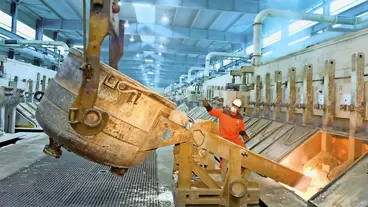Alcoa – market update and outlook
Along with its Q4 2019 and full-year 2019 reporting, the company published its market outlook for 2020. Alcoa projects a global aluminium surplus ranging between 600kt and 1m tonnes with global demand growth in a range of 1.4 to 2.4%. Final global aluminium demand growth rate estimate for 2019 was between -0.4 and -0.2% with a deficit between 1.1m and 900kt tonnes.
The global alumina market closed 2019 with a surplus estimated between 600kt and 1.0m tonnes, a smaller surplus than Alcoa’s previous estimate. In 2020, Alcoa expects a balanced alumina market ranging between -100kt to +700kt tonnes.
Compared to 2019, the bauxite market is projected to be in a smaller surplus in 2020, with Chinese stockpile projected to continue, ranging between 8m and 12m tonnes. The 2019 surplus was lower than previously expected, estimated to be between 10m and 12m tonnes.
In 2020, Alcoa projects total bauxite shipments to range between 48.0m and 49.0m dry tonnes. Total alumina shipments are expected to be between 13.6m and 13.7m tonnes. The aluminium segment is expected to ship between 3.0m and 3.1m tonnes.
In Q1 of 2020, Alcoa expects lower quarterly results in the Bauxite segment primarily due to lower pricing and seasonally lower volumes. In the Alumina segment, the company expects benefits from lower costs for raw materials and the announced portfolio decision to be mostly offset by lower volumes and higher operating costs due to seasonal maintenance. In the Aluminium segment, the company expects performance to be flat, as improvements from lower alumina costs are expected to be offset by higher energy costs, lower rolled products shipments, and unfavourable price and mix.

An analysis of the worldwide aluminium market at the turn of 2023/24 and an outlook for the year 2024.

Wire arc additive manufacturing (WAAM) enables metallic components with optimum ratio between rigidity and weight.

Abu Dhabi Future Energy Company PJSC – Masdar and Emirates Global Aluminium team up to work on aluminium decarbonisation and low-carbon growth opportunities.
